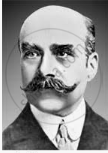Advertisements
Advertisements
प्रश्न
The Montague-Chelmsford scheme of Constitutional Reforms was embodied in the Government of India Act, 1919. In this context discuss the main features of the Act of 1919?
उत्तर
- Dyarchy of Dual Government in the Provinces: Under the Dyarchy the subjects to be dealt by the Provincial Government were divided into:
(i) Reserved subjects, (ii) Transferred subjects. Central Government got subjects of national importance whereas Provincial Government got subjects of local importance. - Enlargement of Provincial Legislative Councils: The Act provided for the establishment of a Legislative Council consisting of the members of the Executive Council, and of nominated elected members.
- Powers of the Governor: The Governor was the head of the executive government in the province. He was supreme and enjoyed extensively legislative powers. He had the power to take over the entire administration in his hands in case of breakdown of Constitutional machinery.
- Supremacy of British Parliament: The Central Executive was not responsible to the Legislature but was responsible to the British Parliament.
- Voting Rights: Many Indians were granted the right to vote as the qualification for voting was lowered for Legislative Assembly. Women were also given the right to vote. The Act extended the communal franchise to other communities also.
APPEARS IN
संबंधित प्रश्न
What is the importance of the Lucknow session of the Congress?
Write any one major drawback of Lucknow Pact.
Where did Tilak establish the Home Rule League?
When were Montague-Chelmsford Reforms introduced?
What were the two main terms of the Lucknow Pact.
With reference to the Home Rule Movement discuss the two factors which emphasize the significance of the Home Rule Movement.
What is meant by Diarchy? How was it to be practiced as per the Government of India Act, 1919?
The bond of alliance between the Congress and the Muslim League was cemented by the conclusion of the Lucknow Pact in 1916. In this context mention the main features of the Pact?
What according to you was the most significant contribution of the Home Rule Movement in India.
Answer the following:

(i) Name the person in the picture.
(ii) With which famous declaration would you associate this gentleman? When this declaration was made?
